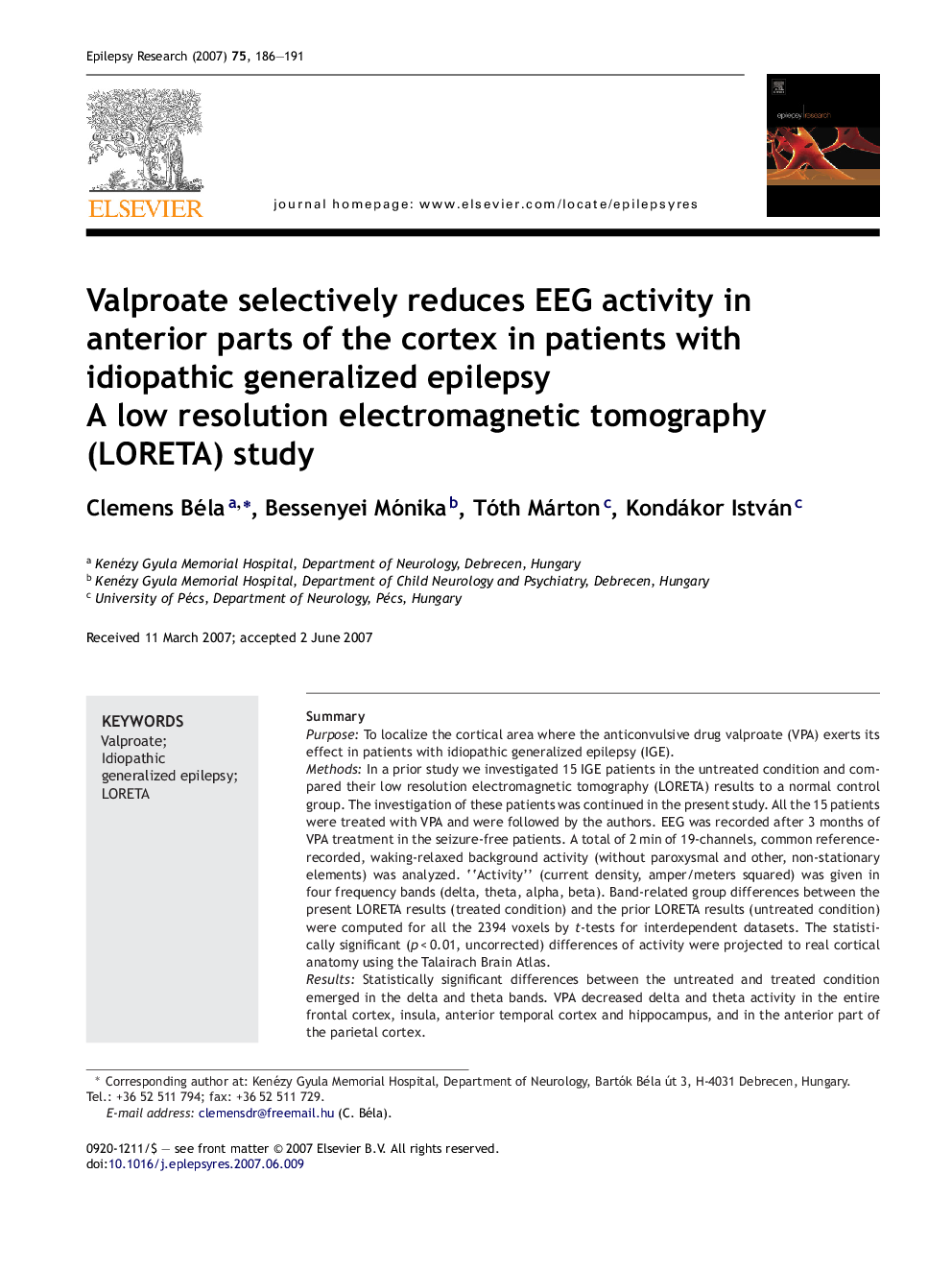| Article ID | Journal | Published Year | Pages | File Type |
|---|---|---|---|---|
| 3053056 | Epilepsy Research | 2007 | 6 Pages |
SummaryPurposeTo localize the cortical area where the anticonvulsive drug valproate (VPA) exerts its effect in patients with idiopathic generalized epilepsy (IGE).MethodsIn a prior study we investigated 15 IGE patients in the untreated condition and compared their low resolution electromagnetic tomography (LORETA) results to a normal control group. The investigation of these patients was continued in the present study. All the 15 patients were treated with VPA and were followed by the authors. EEG was recorded after 3 months of VPA treatment in the seizure-free patients. A total of 2 min of 19-channels, common reference-recorded, waking-relaxed background activity (without paroxysmal and other, non-stationary elements) was analyzed. “Activity” (current density, amper/meters squared) was given in four frequency bands (delta, theta, alpha, beta). Band-related group differences between the present LORETA results (treated condition) and the prior LORETA results (untreated condition) were computed for all the 2394 voxels by t-tests for interdependent datasets. The statistically significant (p < 0.01, uncorrected) differences of activity were projected to real cortical anatomy using the Talairach Brain Atlas.ResultsStatistically significant differences between the untreated and treated condition emerged in the delta and theta bands. VPA decreased delta and theta activity in the entire frontal cortex, insula, anterior temporal cortex and hippocampus, and in the anterior part of the parietal cortex.ConclusionsVPA decreased activity in parts of the cortex that display ictogenic properties and contribute to seizure generation in IGE. Furthermore, the anatomical distribution of the drug effect exactly corresponded to the VPA-related accumulation of neuroprotective proteins reported in experimental papers.
